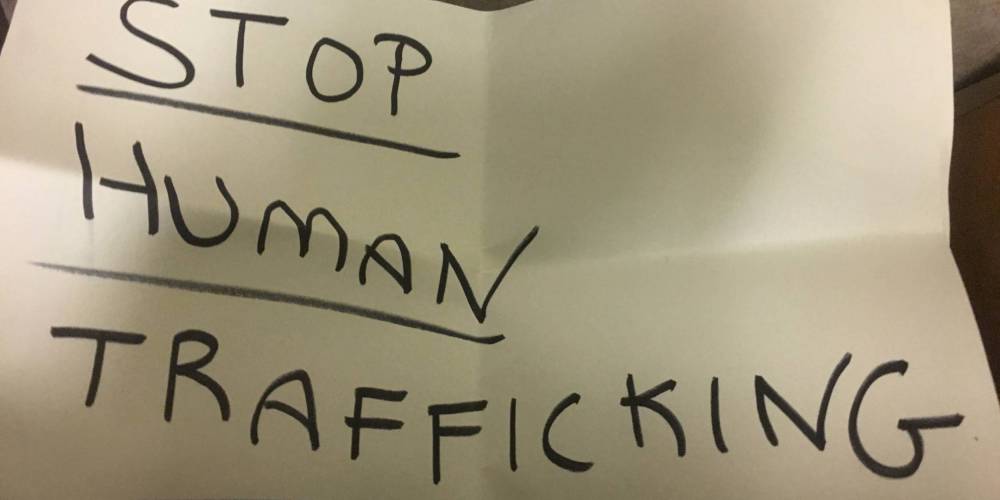DHS/DOT Seeking More Bizav Human Trafficking Training

U.S. Department of Transportation and Homeland Security officials are increasing their reach into business and general aviation in their efforts to raise awareness about and combat human trafficking. Through the joint Blue Lightning Initiative, more than 200,000 aviation professionals have been trained to recognize the indicators of human trafficking and how to report suspicious activity.
Speaking to the Greater Washington Business Aviation Association yesterday, Michael Camal, senior advisor at the U.S. Department of Homeland Security's Blue Campaign, added that the campaign has received a lot of support from the industry, including pilots, airlines, and airports. But, he said, recognizing such activity can be difficult—“That's why we do this training.”
Human trafficking hotlines are receiving tips, Camal said, and as with law enforcement, the majority “don't turn out to be actual cases.” However, he added, “Every once in a while you get one or two and all it takes is one to make it all worth it.”
While many have been trained—including a vast number from the airlines—the initiative still needs to expand further into business and general aviation. Blue Lightning officials also are looking toward training at universities.
Camal noted that traffickers are using a variety of means to ensnare victims, from video gaming to online solicitation and enticement of the disadvantaged or the impoverished. While human smuggling involves a border crossing, human trafficking can happen within a person's hometown. That said, he added, “A lot of trafficking victims are transported via very public modes of transportation” but that the transport also includes “our private jet community and charter flights.”
He pointed out that traffickers like the privacy afforded by private jets and they have become savvy about international crossings using small out-of-the-way airports with little Customs and Border Protection presence.
He noted a case law enforcement worked on just last year in the U.S. Virgin Islands involving 19 known victims, primarily from Venezuela, who were promised work at a restaurant that was actually a brothel. They were brought in on small aircraft, transferring through places such as the Dominican Republic and Puerto Rico using smaller airports. Traffickers took away their documents and threatened deportation should the victims not cooperate.
Camal added these threats prevent victims from coming forward and keep them cooperating with the traffickers. Often times drugs are also used. In the U.S. Virgin Islands case, four of the victims actually agreed to work with investigators, a number that law enforcement was pleased with because it is so difficult to get victims to come forward.
However, human trafficking is throughout the U.S. and involves both labor enslavement and as forced sex workers. He noted that the Ukraine war in particular has made people vulnerable to trafficking and alerted that high-traffic events, such as the Super Bowl, could be attractive venues for traffickers.
He reviewed indicators for aviation workers to recognize, such as travelers having no control over travel identification or documents, having no freedom of movement or social interactions, being unaware or confused about their travel plans, and/or having travel plans changed in the last minute. Another warning sign: the relationship between travelers appears not to be genuine.
Officials encourage workers to report suspicions of human trafficking any time of the day or week to the tip line at (866) 347-2423 in the U.S. and Canada and (802) 872-6199 at international destinations. If an emergency seems to be occurring, 911 should be called. There are also separate flight-deck communications procedures.
Along with training, the Blue Campaign is planning a Human Trafficking Awareness Summit for aviation professionals on January 26 in Washington, D.C.
This “Eyes on Trafficking” story is reprinted from its original online location.
 ABOUT PBJ LEARNING
ABOUT PBJ LEARNING
PBJ Learning is a leading provider of online human trafficking training, focusing on awareness and prevention education. Their interactive Human Trafficking Essentials online course is used worldwide to educate professionals and individuals how to recognize human trafficking and how to respond to potential victims. Learn on any web browser (even your mobile phone) at any time.
More stories like this can be found in your PBJ Learning Knowledge Vault.
EYES ON TRAFFICKING
This “Eyes on Trafficking” story is reprinted from its original online location.
ABOUT PBJ LEARNING
PBJ Learning is a leading provider of online human trafficking training, focusing on awareness and prevention education. Their interactive Human Trafficking Essentials online course is used worldwide to educate professionals and individuals how to recognize human trafficking and how to respond to potential victims. Learn on any web browser (even your mobile phone) at any time.
More stories like this can be found in your PBJ Learning Knowledge Vault.
